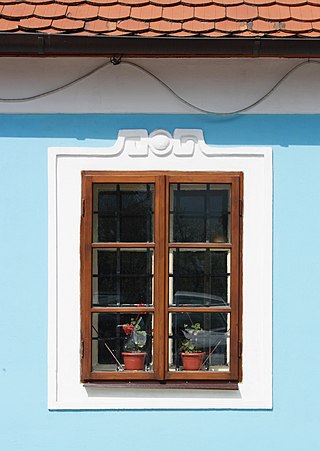
Cyclopædia: or, An Universal Dictionary of Arts and Sciences is a British encyclopedia prepared by Ephraim Chambers and first published in 1728; six more editions appeared between 1728 and 1751 with a Supplement in 1753. The Cyclopædia was one of the first general encyclopedias to be produced in English.
Acatalepsy, in philosophy, is incomprehensibleness, or the impossibility of comprehending or conceiving some or all things. The doctrine held by the ancient Skeptic philosophers, that human knowledge never amounts to certainty, but only to probability.
In pre-modern medicine, antihecticum poterii was a celebrated chemical preparation for use in hectic disorders. It was prepared by melting together one part each of tin and chalybeated regulus in a large crucible, then gradually adding three parts potassium nitrate. When the reaction has run its course, the product is washed with warm water to remove traces of salt.
Arcanum joviale, in pre-modern medicine, is a preparation made of an amalgam of mercury and tin, digested in spirit of nitre. The nitre being drawn off, the remaining matter is wetted with spirit of wine, and the spirit burnt away. This is repeated several times till the pungent taste is gone. What remains was used much with the same intentions as antihecticum poterii, and was recommended by some as a sudorific.
Lapis armenus, also known as Armenian stone or lapis stellatus, in natural history, is a variety of precious stone, resembling lapis lazuli, except that it is softer, and instead of veins of pyrite, is intermixed with green. "The Armenian stone" is so similar to lapis lazuli that it has often not been distinguished from it; Webster's Revised Unabridged Dictionary for instance treats the two terms as synonyms. The Dictionary of Traded Goods and Commodities 1550-1820 defines lapis armenus as
Armenian stone, or azurite, a naturally occurring basic copper carbonate, originally from Armenia, but later from Germany, from which blue bice was prepared. It was often found in association with another copper carbonate, malachite from which green bice was prepared... Probably because they were both blue, blue bice was sometimes misinterpreted to mean lapis lazuli.
Aromaticum rosatum was a powder used in traditional medicine made of red roses, liquorice, aloeswood, yellowheart, cinnamon, cloves, mace, gum tragacanth, nutmegs, cardamoms, galangals, spikenard, ambergris, and musk mixed together. It was chiefly prescribed in cordial and cephalic boles and electuaries. It was believed to act as a tonic on the heart, stomach and liver.
Bezoardicum is a term applied to multiple substances used in alchemy and other practices:
Blanching is the whitening of metal, by various means, such as soaking in acid or by coating with tin. This term is commonly used in coinage, in which pieces are given a lustre and brilliance before images are struck into the surface.
A butlerage was a duty of two shillings on every ton of wine imported into England by foreign merchants. It was so called because it was paid to the king's butler for the king. The tax was levied from 1302 to 1809.
In alchemy, chalcanthum, also called chalcanth or calcanthum, was a term used for the compound blue vitriol (CuSO4), and the ink made from it. The term was also applied to red vitriol (a native sulfate of cobalt), and to green vitriol (ferrous sulfate).
In classical tragedies, the catastasis is the fourth part of an ancient drama, in which the intrigue or action that was initiated in the epitasis, is supported and heightened, until ready to be unravelled in the catastrophe. It also refers to the climax of a drama.
In pre-modern medicine, catholicon was a soft electuary, so called as being supposedly universal in its curative and prophylactic abilities ; or a purger of all humours.
Cerate, historically simple cerate, is an unctuous preparation for external application, of a consistency intermediate between that of an ointment and a plaster. It can be spread upon cloth without the use of heat, but does not melt when applied to the skin.

In architecture and joinery, the chambranle is the border, frame, or ornament, made of stone or wood, that is a component of the three sides round chamber doors, large windows, and chimneys.
A chapeau is a flat-topped hat once worn by senior clerics.
In ancient Roman regalia, a laticlave or clavus was a broad stripe or band of purple on the fore part of the tunic, worn by senators as an emblem of office. The name laticlavia translates to 'broad nail' and figuratively 'broad stripe', in contrast to the 'narrow stripe' (angusticlavia) which appeared on the tunics of lower social ranks.
In eye care, collyrium is an antique term for a lotion or liquid wash used as a cleanser for the eyes, particularly in diseases of the eye. The word collyrium comes from the Greek κολλύριον, eye-salve. The same name was also given to unguents used for the same purpose, such as unguent of tutty. Lastly, the name was given, though improperly, to some liquid medicines used against venereal diseases.
A commodate, also known as loan for use, in civil law and Scots Law is a gratuitous loan; a loan, or free concession of anything moveable or immoveable, for a certain timeframe, on condition of restoring again the same individual after a certain time.
In old English law, contenement is that which is held together with another thing; that which is connected with a tenement, or thing held, such as a certain quantity of land adjacent to a dwelling, and necessary to the reputable enjoyment of the dwelling. This is also known as "appurtenance".


